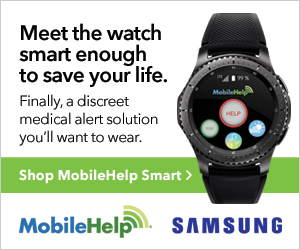The Future of Healthcare is Here
What is the future of healthcare? Imagine this scenario: you place an order for medication, but instead of taking a week, it arrives in only a few hours. And instead of being delivered by a mail carrier, it is dropped off by a robot.
This may seem like a scene out of a sci-fi movie, but it’s closer to reality than you think. In fact, my colleagues at Sibley Memorial Hospital and I (in partnership with the hospital’s Innovation Hub and Starship Technologies) created a short film that envisions what this might look like. Though we haven’t quite reached this point yet, technology has fundamentally changed the ways in which we receive healthcare—particularly for the senior population.
As we age, we encounter new challenges that didn’t affect us in our youth, such as mobility and isolation. And these challenges have a profound impact on our general well being—something as seemingly simple as a routine visit to a doctor’s office can be a hurdle for seniors.
That’s why I believe telehealth offers major opportunities for solutions that are helping seniors age in place. Instead of the arduous task of making multiple visits to the doctor to diagnose and follow up on an ailment—which can consist of hours-long trips for those in more rural areas of the country—telehealth enables people to connect with medical professionals remotely and gain access to care in the safety and comfort of their own home.
So why hasn’t healthcare been able to keep up with technology so far? We can get a ride home and pay for it without ever pulling out our wallets. We can date new people or video chat our families on our smartphones. We can check our account balances and transfer funds from anywhere we have a data connection. Yet we still have to make a trip to the doctor to be treated for a health issue. Barriers include transportation, time, schedules, finances, and practice availability.
It was this key question that led a group of us from MHA@GW, theExecutive MHA program from the Milken Institute School of Public Health at the George Washington University, to create CircaHealth, LLC, a telemedicine consulting company. In short, a combination of factors at the local, state, and federal levels, plus pressures within the healthcare industry are starting to drive telemedicine into more settings for more types of patients.
As I discussed recently on an episode of The Front Row podcast called The Future of Aging, telehealth not only provides seniors with more options for care, it also creates a personal connection with their healthcare team and helps to break down isolation barriers. It allows for easier follow-up and longitudinal health marker monitoring to ensure that medications are being taken properly and that patients are maintaining as they should. As telehealth becomes more widely accepted, healthcare professionals will be able to monitor patients’ weight, blood pressure, blood sugars, social determinants, and other vitals remotely, placing more emphasis on promoting wellness over time instead of treating episodic disease.
Telemedicine will be transformative in the delivery of care for every generation. The future of healthcare is here, and it’s time to embrace it. In 10 years, when robotic deliveries are the norm, we’re going to wonder how we ever lived without them.




































